Steelseries Sensei Wireless Gaming Mouse Review
by E. Fylladitakis on May 1, 2014 6:00 AM EST- Posted in
- Mouse
- Gaming
- SteelSeries
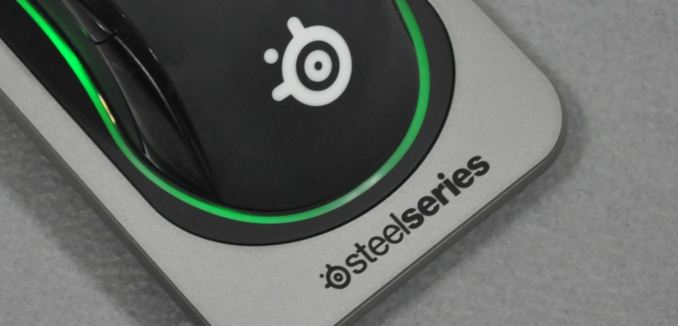
Most advanced users, especially those that are interested in gaming, have almost certainly heard of SteelSeries, a reputable manufacturer of gaming-related peripherals and hardware. The company originates from Denmark and today has offices in the US and Taiwan. They have a very large selection of products available and we cannot possibly cover them all in a single review, but today we will be having a look at their most advanced (and expensive) mouse, the Sensei Wireless.
We received the Sensei Wireless inside a simple, well-designed, hard cardboard box, which should offer ample shipping protection to the lightweight mouse. Aside from the mouse itself, the only other items inside the box are the dock, the USB cable, a company sticker, and a basic manual. There is no CD with the required software, which instead must be downloaded from the company's website.
The SteelSeries Sensei Wireless Mouse
The SteelSeries Sensei Wireless is a symmetrical mouse of classic design. It is a good choice for left handed or ambidextrous users and very comfortable for prolonged use, although perhaps not as ideal as ergonomic mice that are shaped to fit either the left or the right hand. For instance, the Sensei Wireless has two buttons on either side of the mouse. Two of these buttons can easily be pressed by a thumb but it is painfully frustrating to press the other two with your pinky or ring finger. The ribbed wheel of the mouse offers good feedback and comfort, without being too stiff or too soft. There is only one button at the top of the Sensei Wireless that, if not re-programmed, can be used to cycle through the CPI settings.
The top and sides of the SteelSeries Sensei are made of corona treated ("rubberized") plastic, which feels comfortable to the hand and improves adhesion. The company logo can be seen at the top part of the mouse, which illuminates once the mouse is powered on. You can even pick the illumination color and intensity through the software, as well as select from a couple of visual effects, such as "breathe" and "battery status". The default colors of the mouse are red and it is set on "breathe", but these can be easily changed to virtually any color combination and intensity possible.
Perhaps the most interesting feature of the Sensei Wireless is its metallic charging dock. The heavy dock has a metallic surrounding frame but its central and bottom parts are plastic. It is heavy enough so that it won't slide around on your desk and it's shaped to be a perfect fit for the mouse. It also acts as the wireless receiver, but unfortunately the fact that the wireless receiver is integrated into this large, heavy, metallic dock reduces the portability of the Sensei Wireless down to virtually zero, at least if you want to use it in wireless mode. An illuminated ring surrounds the dock, which can also be programmed via the software.
The cable that SteelSeries provides can be connected to either the charging dock or the mouse itself. This way, if you run out of battery, you can just connect the cable to the mouse and keep playing. The proprietary molding of the cable is a perfect fit for either the mouse or the dock. The connector will lock into place once attached to the mouse and you'll need to be careful and not forget about the unlocking button when removing it, as otherwise it is easy to cause permanent damage. There is a catch too; due to the proprietary shape of the connector, finding an exact replacement will be a pain should you lose or damage yours. A typical mini USB cable will fit into the dock but it will not really be a good match for the mouse.


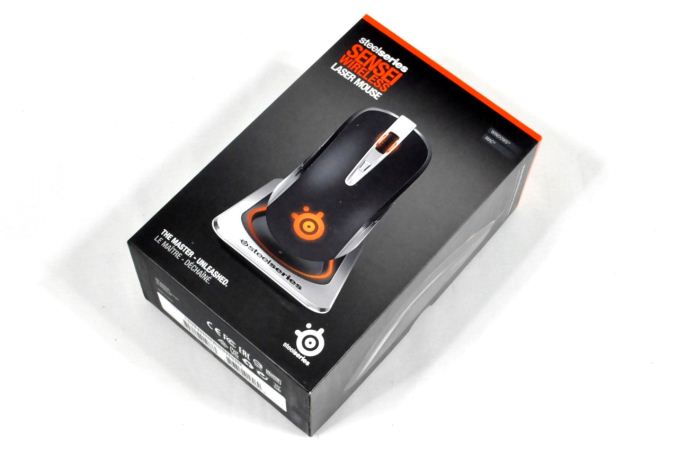
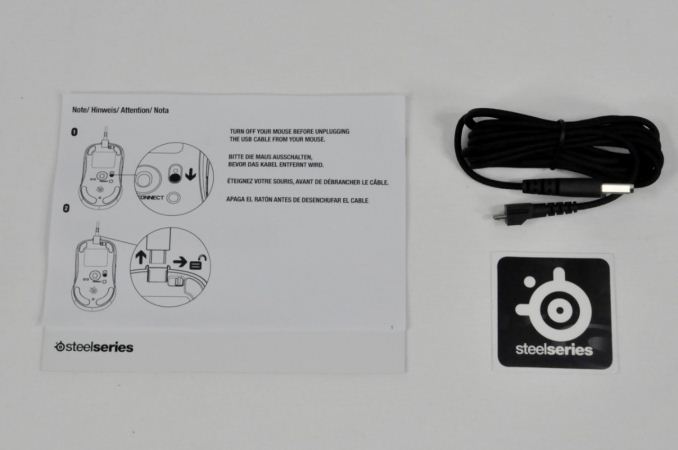

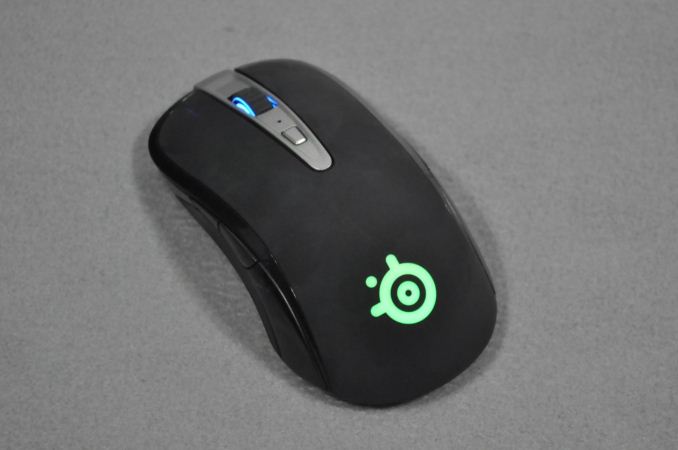
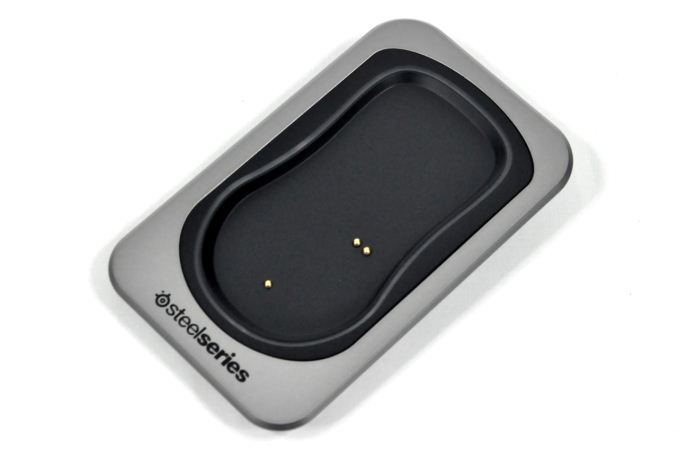














83 Comments
View All Comments
theduckofdeath - Thursday, May 1, 2014 - link
It's to keep the weight down, the battery is probably the size of a pinhead. Which is why they made charging simple with a pad you just put it on whenever you don't use it.shtldr - Friday, May 2, 2014 - link
I think they could actually use a capacitor instead of a battery. A capacitor has almost infinite lifetime and capacity does not degrade compared to a battery.It could be also charged very quickly, provided the dock had a high current source.
Antronman - Thursday, May 1, 2014 - link
This isn't a RAT 9, where you need to charge up every half a day because of how inefficient it is.This has hardly any differences from a general consumer mouse.
The biggest difference is the software and DPI capabilities.
apertotes - Thursday, May 1, 2014 - link
This mouse was being marketed as having a wireless performance that rivaled wired performance in delay. I would have appreciated some words about this in the review.E.Fyll - Thursday, May 1, 2014 - link
The delay of this wireless technology is down to a few milliseconds; I am afraid I cannot possibly measure that in any given way. Even if I could and there is a measurable delay between it and the wired version, I strongly doubt that it would make any actual difference in terms of performance. Noticeable delays are a problem with bluetooth mice and other, older wireless protocols.apertotes - Thursday, May 1, 2014 - link
Well, that is actually what I would have liked to read on the review! Thanks for the feedback. I did not mean that you should test and give a totally exact figure, just how it felt in wireless vs. wired mode, and if it is as you say, then I think it is a very important improvement.Also, is the range good enough to use in the sofa 2-3 meters away from the receiver?
E.Fyll - Thursday, May 1, 2014 - link
It is more than 10 meters with a clear line of sight. I could not really test it for a distance greater than that (and I doubt that it would make any sense).lyeoh - Sunday, May 4, 2014 - link
You strongly doubt there's a difference BUT you didn't measure and claim you can't measure. This sort of article belongs on some "vendor mouthpiece" mag/site not Anandtech. You can do better than this.You could at least compare the relative click latency with a few different mice. There are many ways you could do that- e.g. start a hires timer at the same time on two similar machines using the same type of input device, stop the timer at the same time using difference mice, do it a number of times, swap the mice (just in case the machines are different) repeat. Post the raw data somewhere.
For bonus points - there's tracking accuracy and repeatability. You could fix the mouse and make a test surface move in a repeated circular fashion (or fix the surface and move the mouse) at a set speed- see if you get perfect circles and how perfect they are compared to other mice. Try for increasing speeds. Then we can see if this expensive mice is really measurably better than some cheap crap.
hero4hire - Sunday, May 4, 2014 - link
He was responding to a question in comments. He spelt out his subjective opinion as told you clearly it was subjective and not in the article. You can criticize that they left out a test but you're being overly critical jumping down his clear feelings as if it was in the article as a fact.lyeoh - Tuesday, May 6, 2014 - link
I KNOW he was responding to the question, but where is the evidence to back up his reply? He claims it is a few milliseconds but he does not actually do any tests before replying. Or writing his article for that matter. I expect better from Anandtech. If I want subjective impressions and speculation, and regurgitation of vendor specs I can get it from crappy websites/magazines like T3 for example.